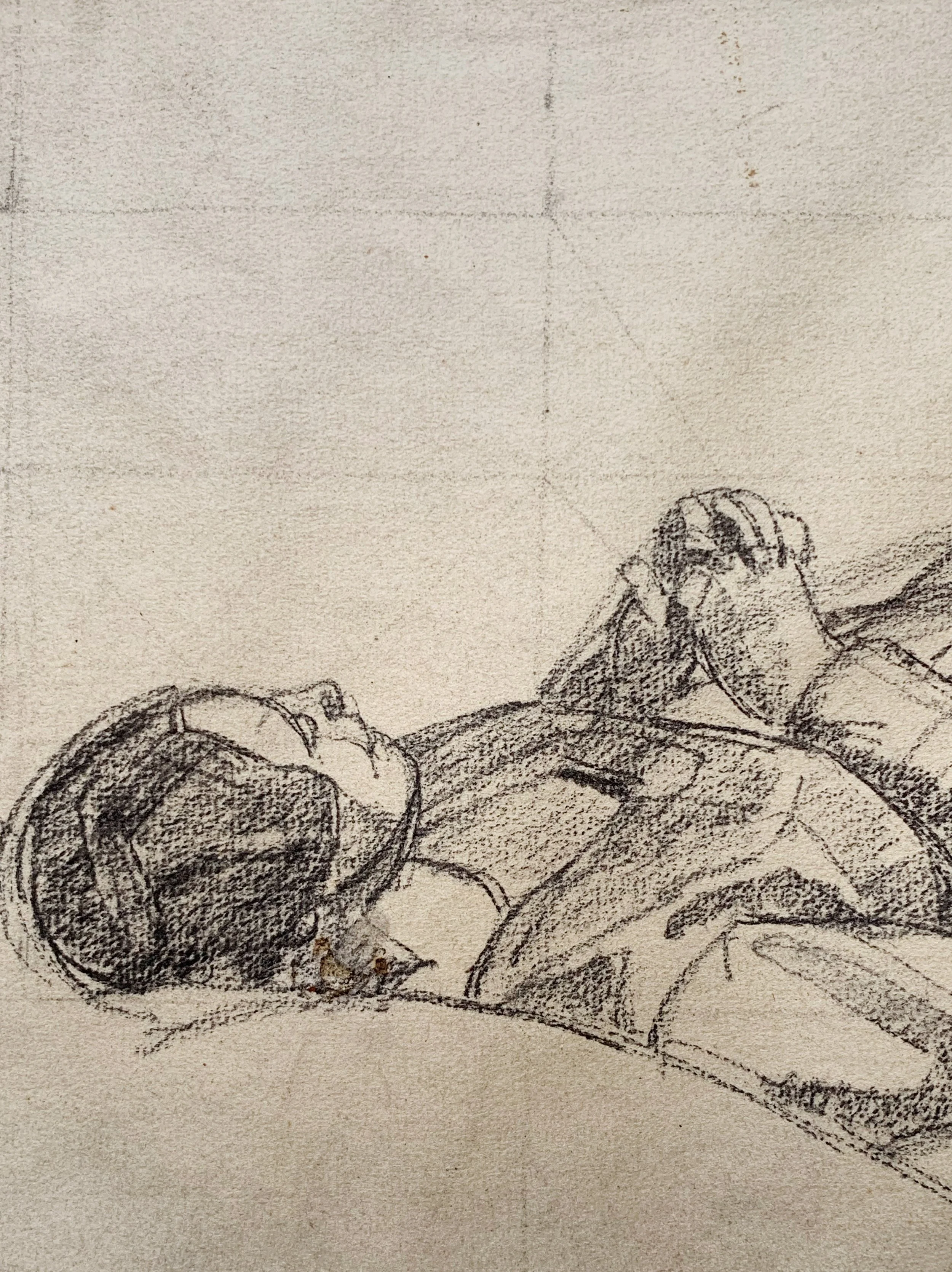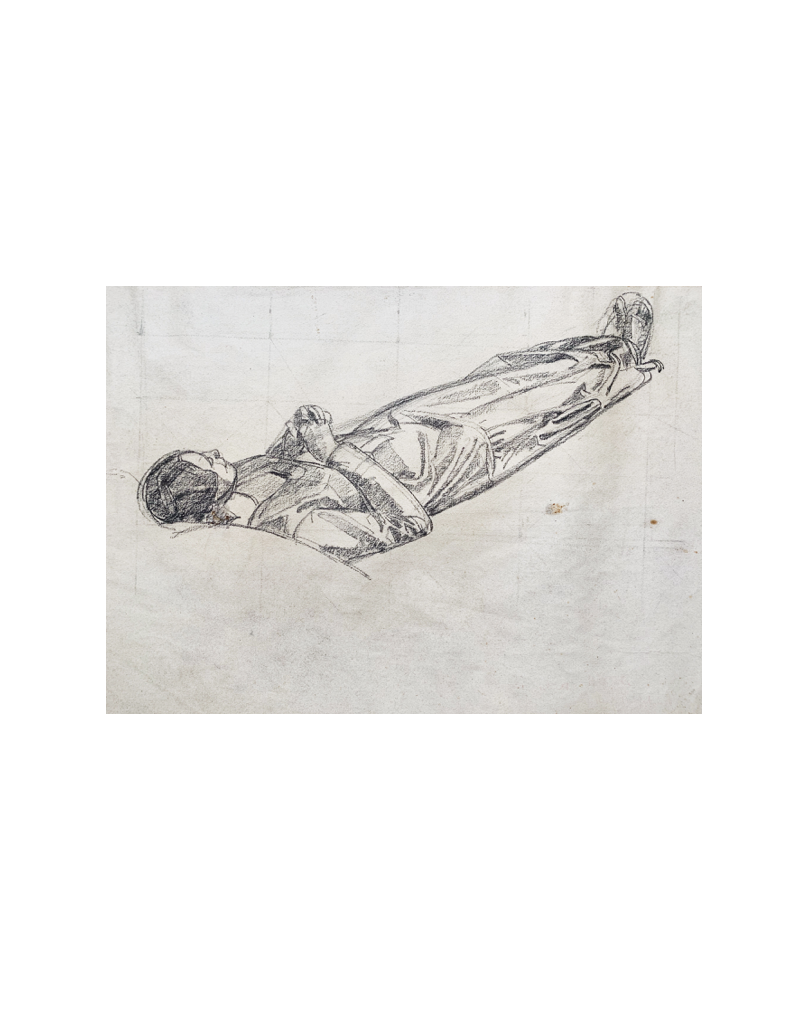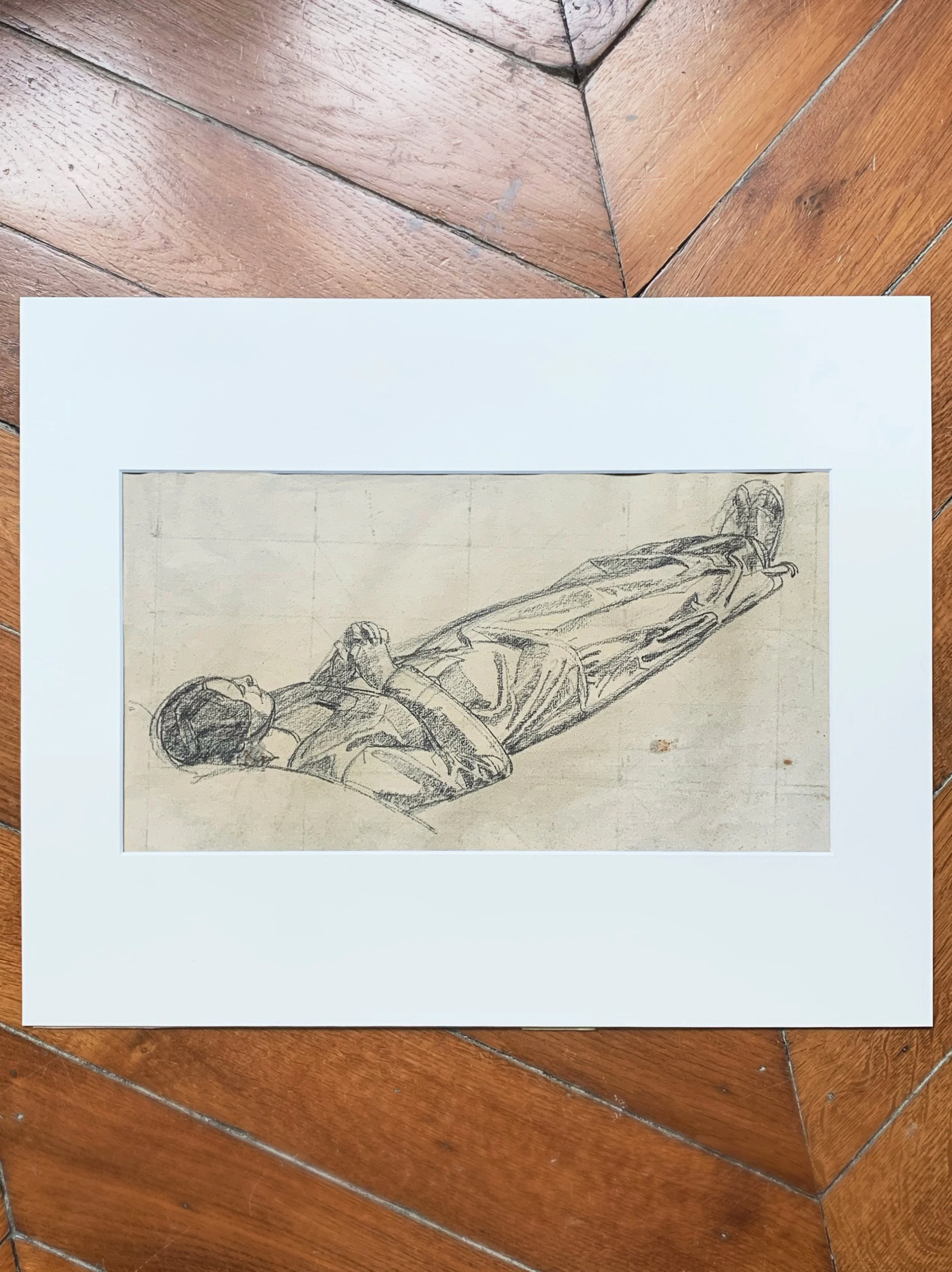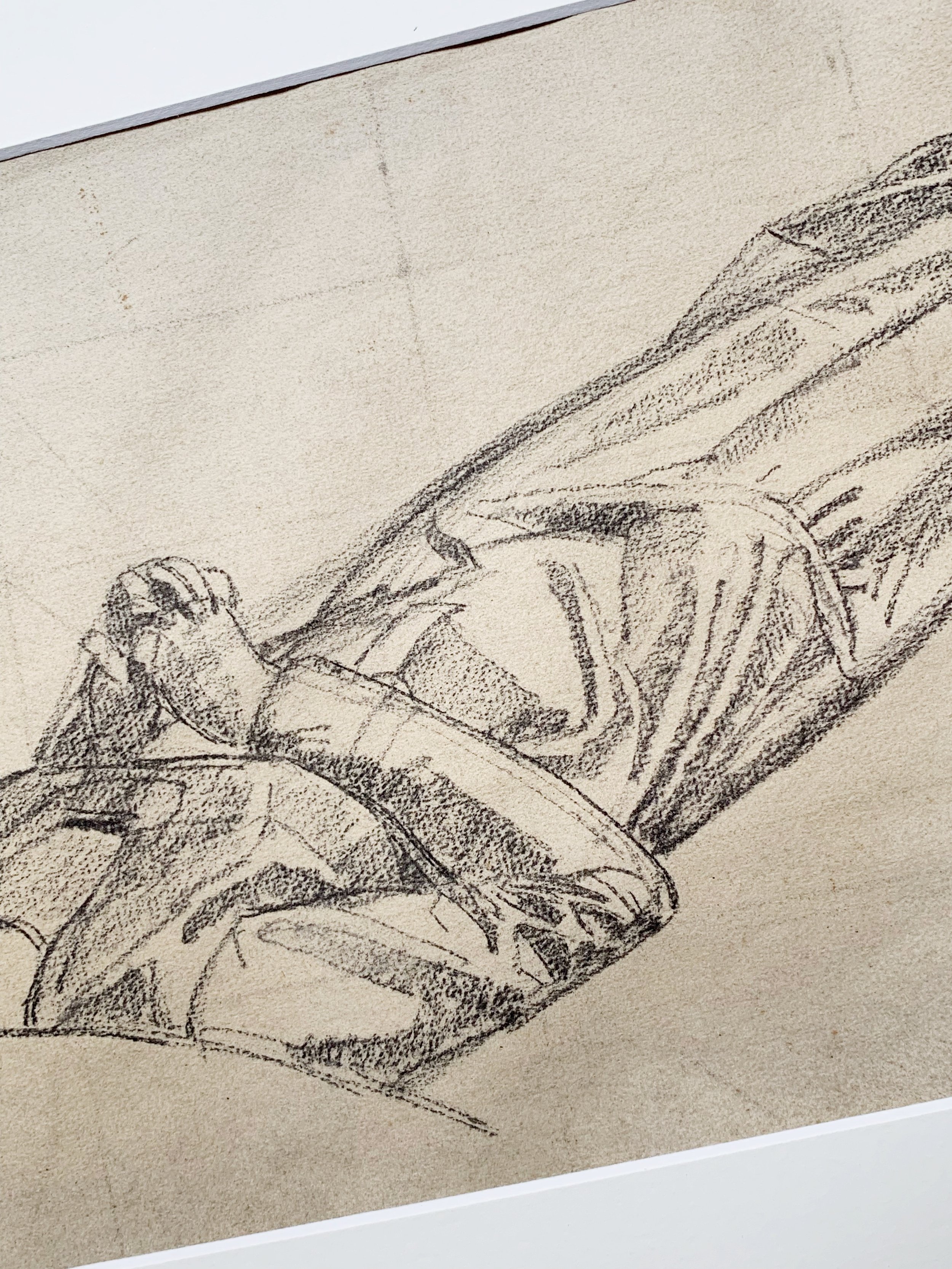Marcel-Lenoir (1872-1931)




Marcel-Lenoir (1872-1931)
Étude préparatoire à La Jeune fille morte, circa 1916
Crayon sur papier
30 x 46 cm
Ce dessin est intégré au catalogue raisonné de l’oeuvre de l’artiste actuellement en préparation par Marie-Ange Namy
-
Preparatory Study for The Dead Girl, circa 1916
Pencil on paper
11,8 x 18 inch
This drawing is included in the catalog raisonné of the artist's work currently being prepared by Marie-Ange Namy
Originaire de Montauban, Jules Oury, qui adoptera plus tard le pseudonyme de Marcel-Lenoir, rejoint Paris en 1889, alors âgé de dix-sept ans. Vivement encouragé par son père orfèvre à développer ses talents artistiques, il suit une brève formation à l’École des Arts Décoratifs puis à l’École des Beaux-Arts. Il se détourne rapidement de l’orfèvrerie pour se concentrer sur la peinture. L’art des primitifs français et italiens qu’il découvre au Louvre le marquera profondément. Grand amateur de Pierre Puvis de Chavanne dont il reçoit les encouragements, il est naturellement attiré par la nébuleuse symboliste et plus particulièrement par l’univers ésotérique de la Rose+Croix.
Travailleur acharné doté d’un talent inné pour la couleur et la composition, Marcel-Lenoir produit une œuvre féconde, en constante évolution. Il opère plusieurs virages stylistiques, toujours dans une esthétique moderne et poétique, et réalise ainsi une formidable synthèse des innovations picturales de son temps. Demeurant fidèle aux formes massives et aux couleurs vives, il s’intéresse à des sujets variés, aussi bien profanes que mystiques et participe au renouveau de la peinture religieuse au lendemain de la Première Guerre mondiale.
Artiste tourmenté empreint d'incertitudes spirituelles, Marcel-Lenoir est avant tout profondément indépendant. Ses condamnations farouches de l’art bourgeois et des institutions officielles desserviront sa fortune critique.
Le dessin mis au carreau que nous proposons est une étude préparatoire à La Jeune fille morte, oeuvre aujourd’hui non localisée, réalisée pendant la Première Guerre mondiale et présentée en 1916 sous le numéro 13 lors d’une grande exposition consacrée à Marcel-Lenoir par la Galerie des Indépendants de Georges Chéron sis 56 rue La Boétie.
Nous remercions Marie-Ange Namy, directrice du Musée Marcel-Lenoir, pour les informations précieuses qu’elle nous a communiquées.
A
Collections publiques - Musées
Paris, Centre Pompidou, Musée national d’art moderne
Montauban, Musée Ingres
Château de Montricoux, Musée Marcel-Lenoir
Bibliographie choisie
Collectif, Marcel Lenoir, cat. expo., Montauban, Musée Ingres, 1994.
Stanislas Fumet, Marcel-Lenoir, l’homme et l’œuvre, Paris, Les écrivains réunis, 1926.
Born in Albi in 1909, Josephine Beaudouin (née Cals) showed an early interest in drawing. At the age of twelve, she moved to Paris where her mother, Jeanne Ramel-Cals, ran a literary salon that was frequented by art world figures such as Ambroise Vollard. In 1925, while her first drawings appeared in the magazine Crapouillot, the young artist entered the School of Decorative Arts where she studied fresco painting. She married the architect Eugène Beaudouin in 1928, with whom she traveled throughout Europe. Beaudouin, a member of the Académie des Beaux-Arts, designed a series of buildings that were precursors of modern architecture in France (Clichy, Maison du Peuple; Antony, Résidence universitaire Jean Zay). Josephine Beaudouin exhibited at the Salon des Indépendants, the Salon des Tuileries, the Salon d'Automne and the Salon des Artistes Décorateurs.
The work of the one that Jean Cocteau described as "bewitching" is full of mystery. Her work bears the stamp of an extraordinary personality. Indeed, Josephine Beaudouin developed a penchant for dreams at a very early age and took refuge in the works illustrated by Gustave Doré. Her technical virtuosity and overflowing imagination were praised by the critics of her time who unanimously greeted her Marmorées (ill.1). Named by René Barotte, these are paintings made on marble slabs from 1955. The artist exploits the infinite resources of the veins of this support which inspires him poetic compositions with unusual subjects. Marked by surrealism, she returns to the fantastic by delivering a prodigious creation of the mind made of dreamed cities and trompe-l'oeil.
The 1948 painting that we propose probably represents a red-billed chough. The bird is a recurring theme in the work of Josephine Beaudouin, as in her life. An avid ornithologist, she kept an aviary in her Parisian home where many island birds were kept. She also built up a collection of stuffed birds. Still on this theme, the writer Claude Aveline (1901-1992), author of the poem L'Oiseau-Qui-N'Existe-Pas, invited several visual artists to freely interpret what this bird could be. The first series of works was produced between 1956 and 1963. In 1957, Joséphine Beaudouin delivered a work with a pen of great finesse, now preserved at the Centre Pompidou (ill.2). Several renowned artists also responded to the invitation of the poet such as Jean Cocteau and Ossip Zadkine.
The precision of the graphics of our painting testifies to an attentive observation of the anatomy of the birds. The artist paints with great delicacy: the technique is impeccable, the drawing is careful, the material is smooth, the details are represented with great finesse and mastery.
* Cette oeuvre est vendue en l’état, sa nature de bien d’occasion emporte l’acceptation de l’acheteur quant à la possibilité qu’elle puisse comporter des marques d’usage, d’usure, de fragilité, d’ancienneté ou de restauration dues au passage du temps.
